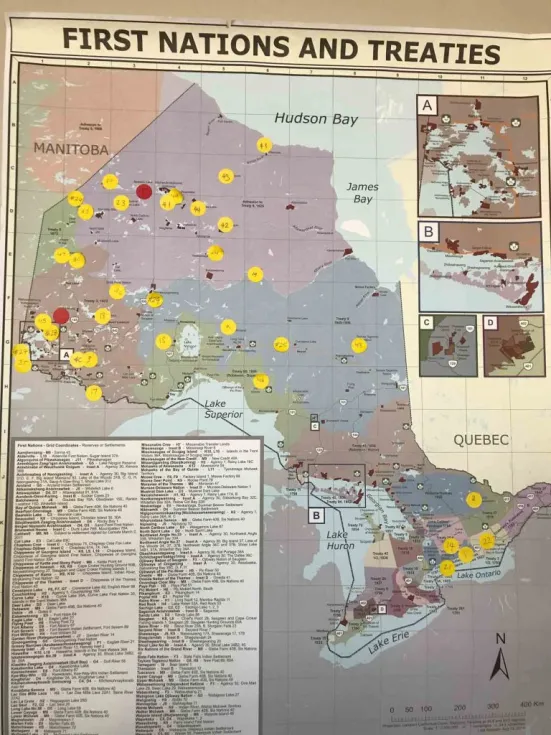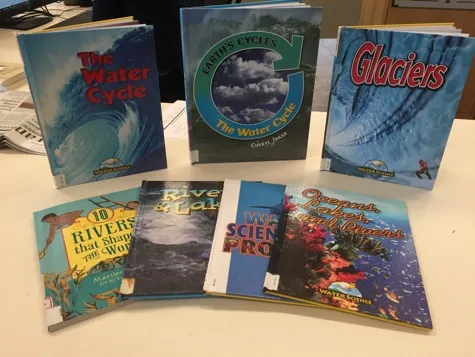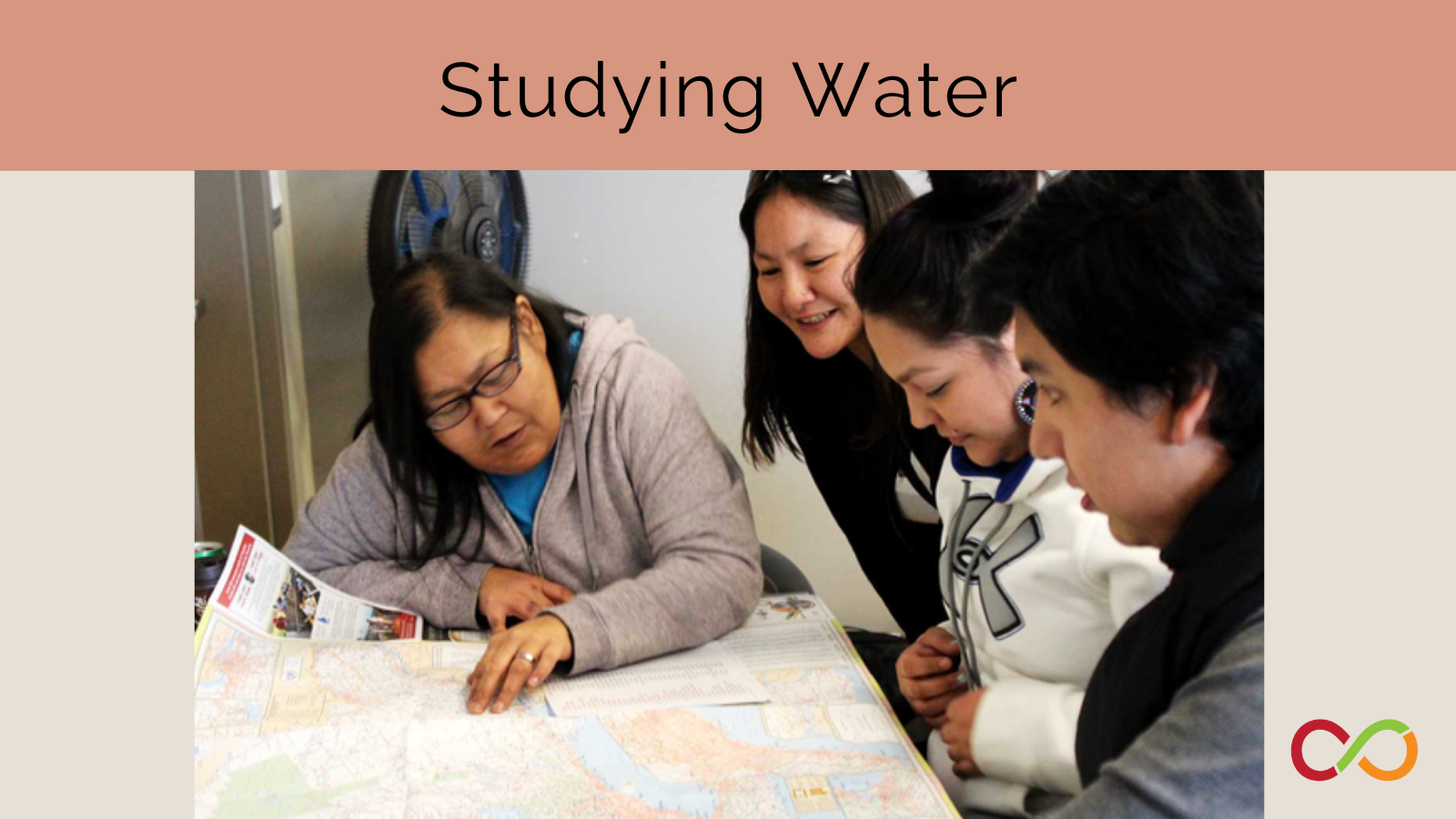Studying Water - Integrating Inquiry-Based Math, Science, Mapping and Social Justice - Part 4: Mapping Drinking Water Advisories
- Junior/Intermediate (Age 9 to 12)
Curriculum Goal
This inquiry-based, water-focused lesson integrates mathematics, environmental science, geography, Indigenous rights, language arts and social justice issues. It was designed to model how inquiry might look in the junior and intermediate grades. It is also an example of how to use mathematics to explore issues of social justice. This lesson has sparked inquiry with groups of teachers during PD as well as with junior and intermediate students in a variety of classrooms. Dr. Bev Caswell developed the lesson in response to the realization that a disproportionate number of First Nation communities experience boil water advisories when compared to the rest of Canada. It appears in the second edition of Natural Curiosity.
"Can you imagine parents, teachers, or the general public in major cities in Canada putting up with this in their schools for weeks let alone years on end?" Caswell says. "Why is there no public outrage on this pressing issue?"
- Communities Under Drinking Water Advisory
- Roadmap of Ontario (one per group)
- Circle Stickers: red, orange, green, blue
- Large First Nation Maps of Ontario
- Same map but smaller versions in plastic sleeves

Participants label a map of First Nation communities currently under a water boil advisory

Water-related books that can be used to further your inquiry
Lesson
- Give each group a list of the names of First Nation communities in Ontario that are under boil water advisories (BLM: First Nations Drinking Water Advisory)
- Divide up the list and assign an equal number of First Nation communities on the list to each table group.
- Distribute a roadmap of Ontario to each table groups.
- Ask groups to act as cartographers and investigative journalists to locate each of the FN communities and write the names of these communities on their roadmaps. Then place a colour coded sticker on the map and write a number to identify the particular community.
- red = do not drink the water
- orange = boil water advisory
- green = algae blooms
- blue = water shortage
*Note: You can have a couple of large First Nation Maps of Ontario to help them locate the First Nation communities or the smaller versions at each table. Alternatively, students can use their computers or phones to locate the communities in the list.
- At the front of the room, hang the large version of the First Nation Map of Ontario. Ask groups to: Place colour-coded stickers on the large map to represent various types and numbers of drinking water advisories First Nation Communities in Ontario.
- Invite students to discuss: “When you look at the map, what do you think?“
- Hand out sources of information about drinking water advisories for First Nation Communities in Ontario.
Look Fors
Invite participants to view map. Ask students the following:
What do you think? What observations do you have? Any further questions to add to our lists?
Categorizing questions
- Which questions can be answered quite quickly?
- Which questions are going to take more time?
- Which are the burning questions?
Have students write these on construction paper and place them on an “inquiry board” in the classroom.
Extension
- Put students into working groups according to their areas of interest (through their questions). Begin researching their area of interest. Gather as a class for discussions or knowledge building circles to share findings. Groups can display their findings prominently in the classroom.
- Teaching children how to “take action” on issues of social justice is an important aspect of informed citizenship. Brainstorm ways in which research groups can make their “finding” public (e.g., creating posters or public service announcements, writing blogs, creating podcasts, documentaries, letters to the editor of local newspapers, etc.)
- Use sticky notes to create a group poem
- Provide additional information about drinking water advisories for First Nation Communities in Ontario. For example, show YouTube videos such as those by HumanRightsWatch (2016) for firsthand accounts of people’s experiences with boil water advisories.
Math refreshers for teachers
What is volume?
It is a word that can have several meanings, such as a number in a series of books; but in terms of measurement, we are looking at how much space an object or liquid occupies. For example, if I have a tank, how much space does it take up?
How to find the volume of prisms:
To find the volume of prism, you have to find the product of the area of the base and the height. For example, if you have a tank with the following dimensions: 50cm (L) x 40cm (W) x 30cm (H), the area of the base is 50cm x 40cm = 2000cm2 . Then you would multiple the base area by the height: 2000cm2 x 30cm = 60 000cm3 . Since 1cm3 = 1mL, 60 000cm3 = 60 000mL. And since 1000mL = 1L, 60 000mL = 60L.
Units of volume:
Volume is measured using L (litres), mL (millilitres), m3 (cubic metre), and cm3 (cubic centimetre).
1cm3 = 1mL
1,000,000 cm3 = 1m3
1000 mL = 1L
1000 L = 1m3
Why is 1 000 000cm3 = 1m3 ?
1m3 = 1m x 1m x 1m
1m3 = 100cm x 100cm x 100cm
1m3 = 1 000 000 cm3
